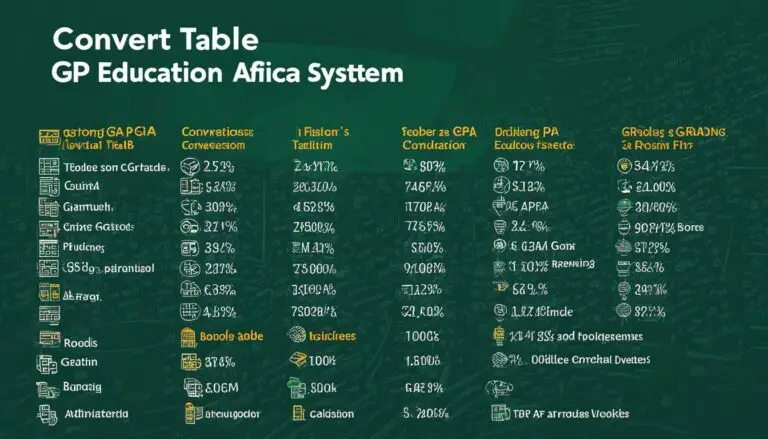USMLE: A Deep Dive into the Three-Step Medical Licensing Process
The United States Medical Licensing Examination (USMLE) is a three-step exam that assesses a physician’s ability to apply knowledge, concepts, and principles in health and disease and to demonstrate fundamental patient-centered skills important in safe and effective patient care.
Purpose and Importance
The USMLE program supports medical licensing authorities in the United States through its leadership in developing, delivering, and continually improving high-quality assessments across the continuum of physicians’ preparation for practice.
State medical boards use the USMLE outcomes to inform licensure decisions and ensure safe and effective patient care.
USMLE Components
The USMLE consists of three exams:
Step 1 evaluates the examinee’s understanding and application of key concepts in the basic sciences of medicine, emphasizing principles and mechanisms related to health, disease, and therapy.
Step 2 assesses the examinee’s ability to apply medical knowledge, skills, and clinical science understanding to provide patient care under supervision.
Step 3 determines if the examinee can apply medical knowledge and comprehend biomedical and clinical science necessary for unsupervised medical practice, focusing on patient management in ambulatory settings.
The USMLE is a crucial component of medical licensure in the United States, and passing the exams is essential for physicians to practice medicine in the country.
Eligibility and Registration
The USMLE is a three-step examination that medical students, graduates, and international medical graduates (IMGs) must pass to obtain a medical license in the United States.
The USMLE program assesses physicians’ ability to apply knowledge, principles, and patient-centered skills to safe and effective patient care.
Eligibility Criteria
To be eligible for the USMLE, applicants must meet specific requirements, including:
- Completion of a medical degree from a school listed in the World Directory of Medical Schools or the International Medical Education Directory (for IMGs)
- Completion of at least one year of a graduate medical education program accredited by the Accreditation Council for Graduate Medical Education (ACGME) or the Royal College of Physicians and Surgeons of Canada (for Step 3 only)
- Compliance with the USMLE attempt limits policy
Registration Process
The registration process for the USMLE involves the following steps:
- Create an account on the National Board of Medical Examiners (NBME) Website
- Apply to the appropriate registration entity for the desired examination (Step 1, Step 2 CK, Step 2 CS, or Step 3)
- Schedule an appointment to take the examination at a Prometric test center
- Pay the examination fees
Fees and Costs
The fees for the USMLE vary depending on the examination and the registration entity. The following table shows the current fees for each examination:
🌟 Hey Students! 🚀 Ready for the ultimate experience? Join us on Studentsinside.com's Facebook, YouTube, WhatsApp, and LinkedIn. Click now for tips, fun, and success vibes! 🌈✨ #StudentLife #JoinUs
| Examination | Registration Entity | Fees |
|---|---|---|
| Step 1 | NBME | $645 |
| Step 2 CK | NBME | $645 |
| Step 2 CS | ECFMG | $1,550 |
| Step 3 | FSMB | $895 |
USMLE Step 1
USMLE Step 1 is an essential examination for medical students and graduates who want to pursue a medical career in the United States. The exam evaluates the examinee’s understanding and application of basic scientific principles and knowledge related to the practice of medicine.
Exam Content
The exam content of USMLE Step 1 is designed to assess the examinee’s knowledge of the basic sciences.
The exam consists of multiple-choice questions that require the examinee to interpret graphic and tabular material, identify gross and microscopic pathologic and normal specimens, and solve problems through the application of basic science principles. The exam content is divided into the following categories:
- Anatomy
- Behavioral sciences
- Biochemistry
- Microbiology
- Immunology
- Pathology
- Pharmacology
- Physiology
Preparation and Resources
To prepare for USMLE Step 1, examinees can use various resources, including textbooks, online courses, and practice tests. Some of the popular preparation materials include:
- First Aid for the USMLE Step 1
- USMLE-Rx
- Kaplan USMLE
- UWorld
Examinees can also access sample test questions and the exam’s content outline from the official USMLE website.
USMLE Step 2
USMLE Step 2 is the second of three exams required to obtain a medical license in the United States. The purpose of Step 2 is to assess the ability of the examinee to apply medical knowledge, skills, and understanding of clinical science essential for patient care under supervision. Step 2 is divided into Clinical Knowledge (CK) and Clinical Skills (CS).
Clinical Knowledge (CK)
The Clinical Knowledge (CK) portion of Step 2 is a multiple-choice exam with approximately 318 questions divided into eight 60-minute blocks. Topics include internal medicine, surgery, pediatrics, obstetrics and gynecology, psychiatry, and preventive medicine.
The CK exam assesses clinical science knowledge, focusing on patient-centered skills like communication, history-taking, and physical examination. It also highlights the significance of health promotion and disease prevention.
Clinical Skills (CS)
The Clinical Skills (CS) portion of Step 2 assesses the examinee’s ability to gather patient information, perform physical examinations, and communicate their findings to patients and colleagues.
The CS exam is a standardized patient encounter in which the examinee interacts with a patient and performs a physical examination.
The exam is designed to assess the examinee’s ability to gather information from the patient, perform a focused physical examination, and communicate their findings to the patient and colleagues.
The CS exam emphasizes the importance of patient-centered skills, such as communication, history-taking, and physical examination. It also emphasizes the importance of clinical decision-making and the ability to work effectively as part of a healthcare team.
Step 2 CK Exam
The Step 2 CK exam is a computer-based exam administered at Prometric testing centers throughout the United States and in select international locations.
The exam is approximately nine hours long and is divided into eight 60-minute blocks. The exam assesses the examinee’s ability to apply medical knowledge, skills, and understanding of clinical science essential for providing patient care under supervision.
Clinical Science
Clinical science uses medical knowledge to find, treat, and prevent illnesses. It includes internal medicine, surgery, pediatrics, and more. It’s crucial for good patient care and is a key part of the USMLE Step 2 exam.
USMLE Step 3
The USMLE Step 3 is the concluding examination in the USMLE series. It evaluates a physician’s capacity to apply medical knowledge and comprehend biomedical and clinical science necessary for independent medical practice, focusing on patient management in ambulatory settings.
Exam Focus
The Step 3 exam evaluates a physician’s competence in delivering safe and effective patient care. This includes the capacity to diagnose and treat patients with diverse medical conditions. The assessment specifically gauges a physician’s decision-making prowess and ability to handle patients across different ambulatory, emergency, and inpatient settings.
Test items and cases presented in the exam mirror clinical scenarios commonly encountered by a general, undifferentiated physician in a specific setting. The examination encompasses a range of medical disciplines, encompassing internal medicine, pediatrics, obstetrics and gynecology, surgery, psychiatry, and preventive medicine.
Preparation Strategies
To prepare for the Step 3 exam, physicians should review the content outline, specifications, and sample questions. Utilizing the Step 3 interactive testing experience is recommended. Consider a Step 3 review course for identifying weaknesses and creating a study plan.
Supplement preparation with medical textbooks and online resources. During the exam, read each question carefully, employ clinical judgment to eliminate incorrect choices, and choose the best answer among the remaining options.
Testing Experience
The USMLE is a computer-based examination conducted at Prometric centers nationwide. The testing experience is designed to be efficient, secure, and comfortable for all test-takers.
Test Centers
Prometric centers are located in all major cities across the United States, making it easy for test-takers to find a convenient center. The centers have state-of-the-art technology that ensures a smooth and secure testing experience.
Test-takers must arrive at the center at least 30 minutes before their appointment to complete the check-in process.
During the COVID-19 pandemic, Prometric has implemented additional safety measures to protect the health and well-being of test-takers and staff. These measures include increased cleaning and disinfecting of test centers, mandatory face masks, and social distancing protocols.
Day of the Exam
Test-takers must bring a valid government-issued photo ID and their appointment confirmation on the exam day. They are also advised to bring a light snack and water, as they cannot leave the testing center during the exam.
Test-takers cannot bring personal items into the testing room, including cell phones, bags, and study materials. Prometric provides lockers for test-takers to store their items during the exam.
Test center policies are designed to ensure a fair and secure testing experience for all test-takers. Test-takers who violate the policies may be subject to disciplinary action, including canceling their scores.
Scoring and Results
The USMLE program provides a recommended pass or fail outcome on all Step examinations. The scoring system is based on a specified level of proficiency, and no predetermined percentage of examinees will pass or fail the examination.
Scoring System
The USMLE Management Committee establishes the passing scores and recommends a pass or fail outcome on all USMLE exams. The Step 1 exam score outcomes will be reported as pass/fail for exams administered on or after January 26, 2022.
The scoring system involves independent scoring systems, which provide accurate testing and parallel scoring methods.
Result Notification
The National Board of Medical Examiners (NBME) is responsible for the administration of the USMLE. Once the results are available, the NBME notifies the examinees.
The results are available on the NBME website, and examinees can log in to view their score reports. The USMLE program provides an accurate testing and scoring system, ensuring fairness and accuracy in examining examinees.
Residency and Beyond
Here are some key things to know about residency and beyond:
Matching to Residency
The residency matching process is highly competitive, and many factors are considered when selecting candidates. USMLE scores are just one of these factors, but they are often given significant weight.
Residency programs typically look for candidates with high USMLE scores, which indicates a strong medical knowledge foundation and a dedication to the field.
In addition to USMLE scores, residency programs consider factors such as the candidate’s medical school performance, clinical experience, research experience, and personal qualities. Candidates need a well-rounded application that highlights their strengths in these areas.
State Licensure
After completing a residency program, doctors must obtain a medical license to practice medicine in the United States. Each state has its medical board that oversees the licensure process. Doctors must pass the USMLE and meet other state-specific requirements to obtain a medical license.
Alternative Pathways
For those unable to take the USMLE, alternative pathways are available. These pathways are designed to provide opportunities for individuals who may not meet the traditional requirements for USMLE certification.
COMLEX-USA for Osteopathic Students
The National Board of Osteopathic Medical Examiners (NBOME) offers the Comprehensive Osteopathic Medical Licensing Examination (COMLEX-USA) for osteopathic medical students.
This exam assesses the knowledge and skills required for osteopathic medical practice. It is important to note that while many residency programs accept COMLEX-USA, it may not be accepted by all programs.
International Pathways
International medical graduates (IMGs) who cannot take the USMLE can also explore alternative pathways. One such pathway is the ECFMG Pathways for Certification. This program provides IMGs with opportunities to meet the clinical and communication skills requirements for ECFMG certification.
Another option is the Alternate Pathway the American Board of Radiology (ABR) offers. This pathway is designed for IMGs who have completed four years of radiology training and meet specific degree requirements.
Frequently Asked Questions
Common Concerns
Here are some common questions and concerns:
- What is the format of the USMLE?
- The USMLE is a three-step exam evaluating medical knowledge, skills, and clinical science understanding. Step 1 and Step 2 CK are computer-based, while Step 2 CS and Step 3 focus on clinical skills.
- How long does it take to prepare for the USMLE?
- The time required to prepare for the USMLE varies from student to student. However, most students require 6-12 months of dedicated preparation time.
- What is the passing score for the USMLE?
- The USMLE Management Committee determines the passing score for each step of the USMLE. The passing score is usually around 194-196 for Step 1, 209-211 for Step 2 CK, and 196-198 for Step 3.
Exam Changes and Updates
Here are some of the most notable changes:
- COVID-19 Pandemic
- Due to the COVID-19 pandemic, the USMLE has made several changes to the exam, including implementing remote proctoring for Step 1 and Step 2 CK exams.
- USMLE Step 1 Pass/Fail Scoring
- In 2020, the USMLE announced that Step 1 scoring would be changed from a three-digit score to a pass/fail system, effective January 2022.
- USMLE Content Updates
- The USMLE regularly updates the content of its exams to reflect changes in medical practice and knowledge. For example, the USMLE recently updated the Step 2 CS exam to include a telemedicine component.
- Kaplan USMLE Prep
- Kaplan is a popular USMLE prep provider that provides a variety of study materials and resources, including live lectures, online courses, and practice exams. Many students find Kaplan’s resources helpful in preparing for the USMLE.
Additional Resources and Support
- Practice materials: The USMLE offers content outlines and sample test questions to aid exam preparation. These resources provide insights into the exam structure, helping candidates anticipate and address areas requiring additional practice.
- Practice questions: In addition to the USMLE’s sample questions, many other practice questions are available online. These questions can help you gauge your understanding of the material and identify areas where you need more practice.
- Training: Many medical schools offer training programs designed to help students prepare for the USMLE. These programs may include lectures, practice exams, and other resources to help you succeed.
- Graduation: If you are a recent graduate, your medical school may offer additional support and resources to help you prepare for the USMLE. This may include study groups, tutoring, or other forms of support.
- Medical profession: As a future physician, it is important to stay up-to-date with the latest developments in the medical profession. Consider joining professional organizations or attending conferences to stay informed and connected with other healthcare professionals.
- Patient management: The USMLE assesses your ability to apply knowledge and principles to provide safe and effective patient care. Consider shadowing or volunteering in a healthcare setting to gain hands-on experience and develop patient management skills.








